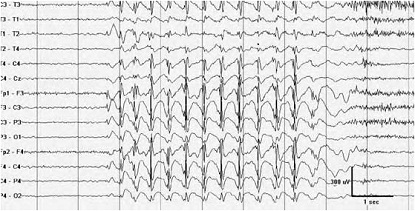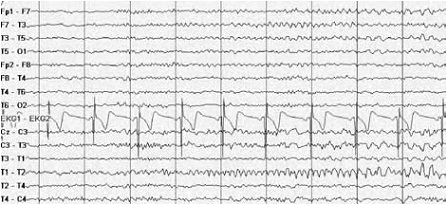Nursing quiz
ELECTROENCEPHALOGRAPHY (eEG) Quiz

ELECTROENCEPHALOGRAPHY (eEG) Quiz
|
1. Electroencephalogram (EEG) rhythm was first recorded by:
|
|
|---|---|
|
2. The most prominent EEG wave pattern of an awake, relaxed adult whose eyes are closed is:
|
|
|
3. Stage 2 sleep is defined by the presence of:
|
|
|
4. When people are attentive to an external stimulus or are thinking hard about something, the alpha rhythm is replaced by
|
|
|
5. Indications for clinical EEG assessment of psychiatric patients include, all EXCEPT
|
|
|
6. Diffuse, bilaterally synchronous 3Hz wave and spike discharges are typical EEG findings of: Copy right at @ www.currentnursing.com
|
|
|
7. Continuous generalized slowing consists of polymorphic delta activity that is continuous or near-continuous (>80% of the record) and reactive is suggestive of
|
|
|
8. Which of the following EEG findings has a strong association with partial seizures?
|
|
|
9. Identify the the abnormality.
|
|
|
10. Identify the pattern.
|
|
|
11. EEG pattern in REM sleep is:
|
|
|
12. Frequency of sleep spindles:
|
|
1. C
|
2. C
|
3. B
|
4. D
|
5.C
|
|
6. A
|
7. B
|
8. A
|
9. D
|
10. D
|
|
11. B
|
12. A
|
References
- Nettina, Sandra M.; Mills, Elizabeth Jacqueline. Lippincott Manual of Nursing Practice, 8th Edition. Copyright ©2006 Lippincott Williams & Wilkins.
- Bhatti K. Dinesh Companion to Biology. S. Dinesh & Co. New Delhi, 2009.

